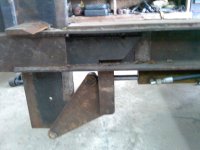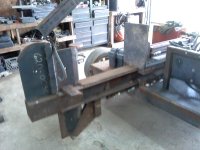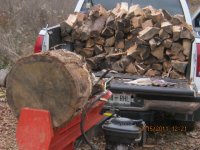To address some concerns,
first, I can't move the axle, I am pretty sure by the time I weld on the hitch, add hydro fluid to the 17 gal tank (which is behind the axle) it will be well balanced.
Secondly, I have searched the internet extensively and that is how I came up with my pusher design, look at a TW1 (I think), not a very big beam or pusher.
Third, I will box the beam in places where the wedge and ram mounts, hopefully it will be strong enough.
Fourth, If you look at European splitters, almost all of them have a single wedge, no wings, my thought here is to slice wood that normally won't want to split (IE, stringy wood).
I am thinking of a slip on 4 way.
Fifth, I am going to mount the control valve at the front top of the piston, accessible from either side.
My gut says to go with the 22 gpm pump but there are some very powerful arguments for not going that route. I asked for real world experience and got some good responses about sticking with the 16 gpm pump, I guess I could always sell it and buy a 22 if I am not happy with it. My calculations say that a 16 gpm should give me 11 sec cycle times and the 22 would give me 8 second cycle times, how hard do I wanna work? LOL
In case you missed it I just picked up a Huskee 22 ton and working alone it is plenty fast enough. I'm going to sell the Huskee once I get my splitter done.
I do thank you all for your input, that's why I threw this out there. I know enough to know that I don't know! LOL I wish I did.
The pump is pretty much the last part I'm waiting to order, now I'm a little confused. LOL
I don't get much wood that splits super hard, mostly oak butt ends from veneer logs, some poplar, maple and hickory and ash. I don't have a wood lot and have to scrounge, My brother buys log truck loads for his OWB. Some of his wood is stringy, birch, beech, maple and black birch.
thanks again,
dae


